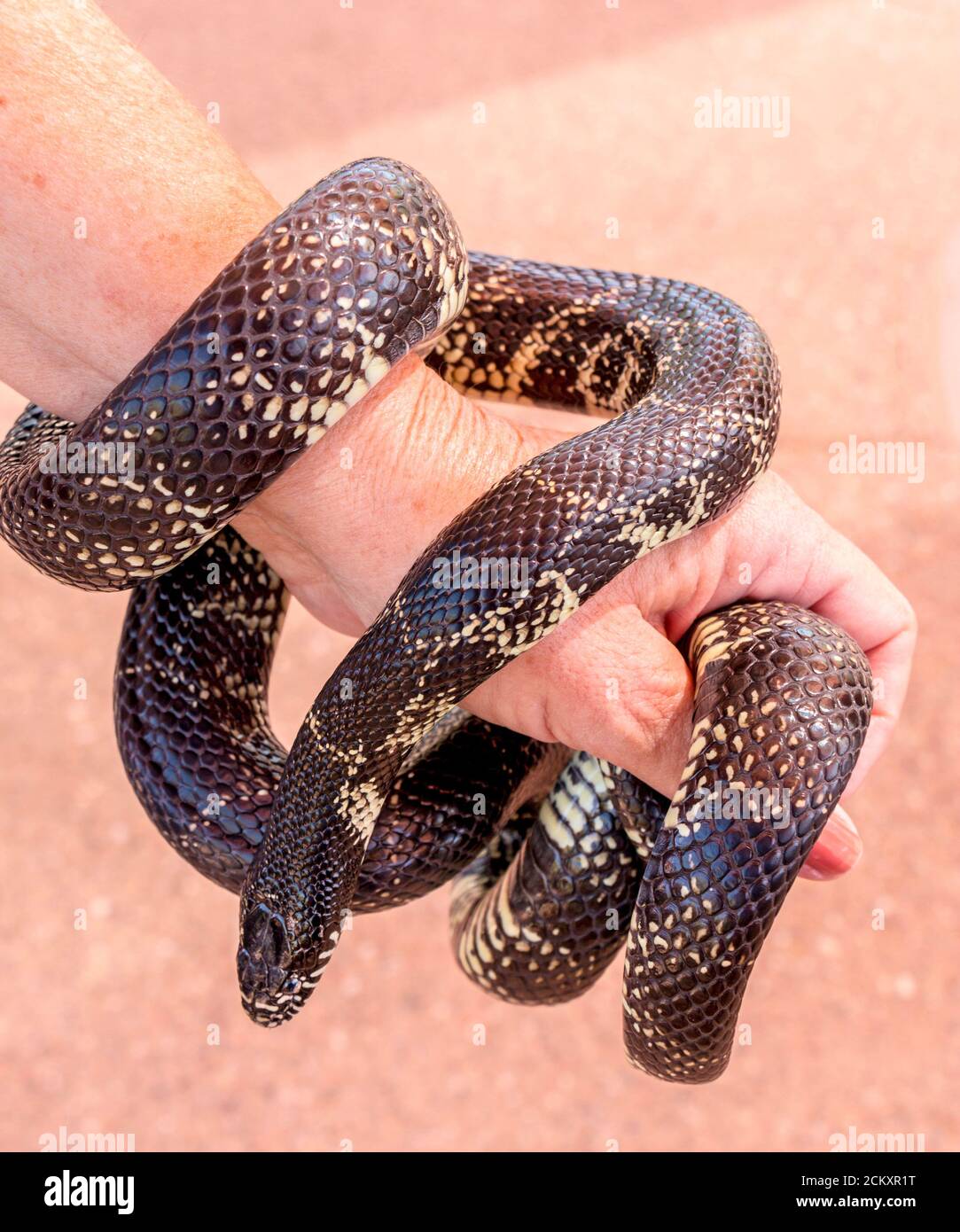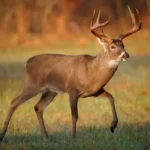Get ready to meet the Chain Kingsnake, a mysterious reptile that’s sure to captivate you. We’ll explore its looks, where it lives, what it eats, and how it behaves. We’ll also uncover surprising facts, like how it defends itself and what makes it so special. So, sit back, relax, and get ready to discover the fascinating world of the Chain Kingsnake!
Chain Kingsnakes: Masters of Disguise and Ecosystem Balance
The chain kingsnake, scientifically known as Lampropeltis getula, is a non-venomous reptile that has captivated both scientists and nature enthusiasts alike. Its striking chain-link pattern and intriguing hunting techniques make it a true standout in the snake world. Found slithering across a variety of habitats in eastern North America, the chain kingsnake showcases an impressive ability to adapt and thrive. Perhaps its most notable feature is its remarkable tolerance to the venom of other snakes, making it a formidable predator in its domain.
Unveiling the Diet of a Kingsnake
What makes the chain kingsnake a true marvel of the reptile world? Their feeding habits and hunting prowess are nothing short of remarkable. As constrictors, they’ve perfected the art of subduing their prey by squeezing, effectively stopping their meal in its tracks before swallowing it whole. Their menu is surprisingly diverse, featuring a range of animals from rodents and lizards to amphibians and even bird eggs. However, it’s their reputation for preying on venomous snakes like rattlesnakes and copperheads that truly sets them apart. This remarkable ability is attributed to their venom resistance—a trait that allows them to not only survive venomous bites but also to help control the populations of these potentially dangerous reptiles.
A Balancing Act: The Chain Kingsnake’s Role in the Ecosystem
The chain kingsnake plays a crucial role in maintaining a healthy ecosystem. Their appetite for rodents, for instance, helps keep these populations in check, which in turn, protects crops and reduces the risk of diseases spreading to humans and other animals. Similarly, their ability to keep venomous snake populations balanced ensures that these potentially harmful creatures don’t negatively impact other wildlife. It’s a delicate dance, and the chain kingsnake is a key player in keeping this intricate ecosystem in harmony.
Navigating an Uncertain Future
Despite being currently classified as a species of “Least Concern,” the chain kingsnake is not without its challenges. Habitat loss due to expanding human development, accidental death from vehicles, and the unfortunate reality of fear-driven killing by misinformed people all contribute to their decline. Safeguarding their natural habitats and promoting responsible pet ownership are essential steps toward ensuring the survival of these captivating creatures. Education is paramount. Understanding the critical role chain kingsnakes play in our environment is the first step in ensuring that these fascinating reptiles continue to thrive for generations to come.
Debunking the Myth: How Venomous is a King Snake?
We’ve established that king snakes are quite impressive creatures. But let’s address the often-asked question—are they venomous? The answer is a resounding no! King snakes, despite their sometimes-intimidating patterns that even mimic the colors of their venomous counterparts, don’t possess any venom. This clever mimicry, known as Batesian mimicry, is simply a brilliant defense mechanism, tricking potential predators into thinking twice before tangling with what appears to be a dangerous snake.
So, how do these gentle giants consume venomous snakes without succumbing to the venom themselves? This is where things get truly fascinating. Scientists suggest that king snakes have evolved special proteins in their blood that act as venom neutralizers—like a built-in antidote. This extraordinary adaptation is what allows them to turn the tables on venomous snakes, becoming apex predators and playing a crucial role in maintaining a balanced ecosystem.
Their appetite for venomous snakes is not just a cool trick; it’s a vital service. By helping to control venomous snake populations, they prevent an overabundance that could disrupt the natural order. And let’s not forget their fondness for rodents, which keeps those populations from getting out of control—a welcome benefit for farmers and anyone who appreciates an un-nibbled garden!
Is There Actually a Snake Called a Chain Snake?
You’re not alone in wondering this! While “chain snake” is a term you might hear, it’s more of a nickname than an official title. It’s a colloquialism often used to describe the Eastern Kingsnake, specifically referencing its distinctive black and white markings that resemble—you guessed it—links in a chain.
These Eastern Kingsnakes are non-venomous and incredibly beneficial to the environment. Their diet, which includes rodents and even venomous snakes, helps keep the ecosystem in balance. Fewer rodents also mean a reduced chance of diseases spreading, making them valuable allies.
Eastern Kingsnakes are adaptable creatures, found in diverse environments ranging from forests and fields to swamps. Their docile nature and, of course, striking chain-like patterns have made them popular among reptile enthusiasts.
Kingsnake Size: Unveiling the Largest of the Species
We’ve delved into the appearance and habitats of kingsnakes, but what about their size? While their black and white patterns are attention-grabbing, it’s worth noting that some kingsnakes can grow to be quite large. The typical kingsnake measures between 3 to 5 feet in length. However, some individuals have been known to stretch those boundaries, reaching an impressive 6 feet or more!
It’s important to remember that when discussing the “largest” kingsnake, it’s not as straightforward as measuring any individual. Kingsnakes, you see, have different subspecies, each with its own average size.
The Eastern Kingsnake, scientifically known as Lampropeltis getula getula, is generally regarded as the largest of the kingsnake subspecies. While there’s always the possibility of a particularly ambitious kingsnake from another subspecies challenging this notion, if you encounter a kingsnake rivaling the height of a tall person, it’s highly likely to be an Eastern Kingsnake.
Exploring the World of Chain Kingsnakes
This guide has just scratched the surface of the fascinating world of chain kingsnakes. From their remarkable venom resistance and ecological significance to their adaptability and docile nature, chain kingsnakes continue to captivate researchers and enthusiasts alike. As we learn more about these incredible creatures, we gain a deeper appreciation for the intricate balance of the natural world and the importance of protecting these fascinating reptiles for future generations. Please remember that encountering a snake in the wild should always be met with respect and caution. Observe them from a safe distance and allow these fascinating creatures to continue their important work in the ecosystem.
- Senior at What Age: Benefits & Eligibility Guide - March 29, 2025
- Unlocking Senior Benefits: How Old is a Senior? Your Complete Guide - March 29, 2025
- Master Russian Politeness:A Guide to Saying Please - March 29, 2025
















